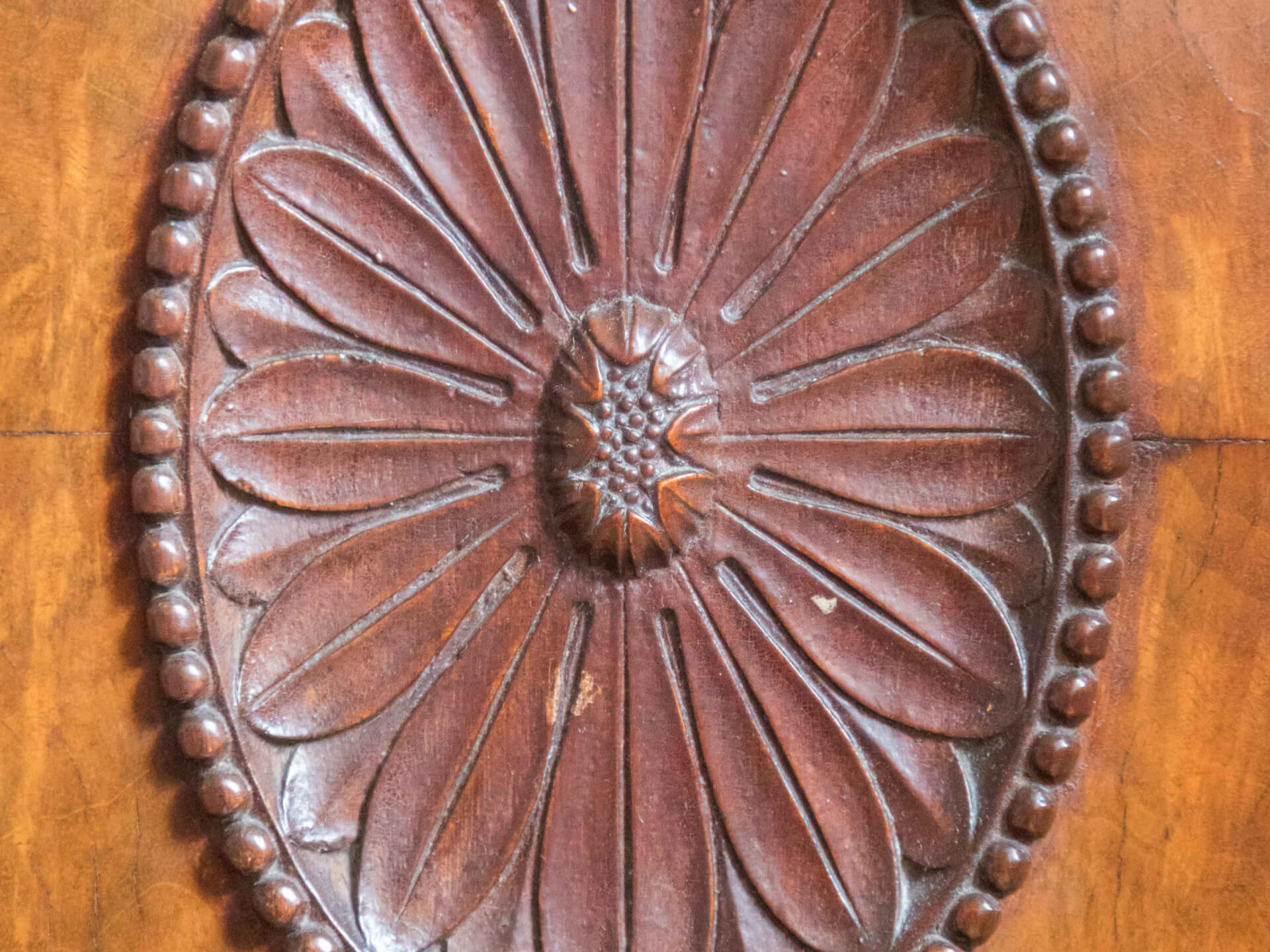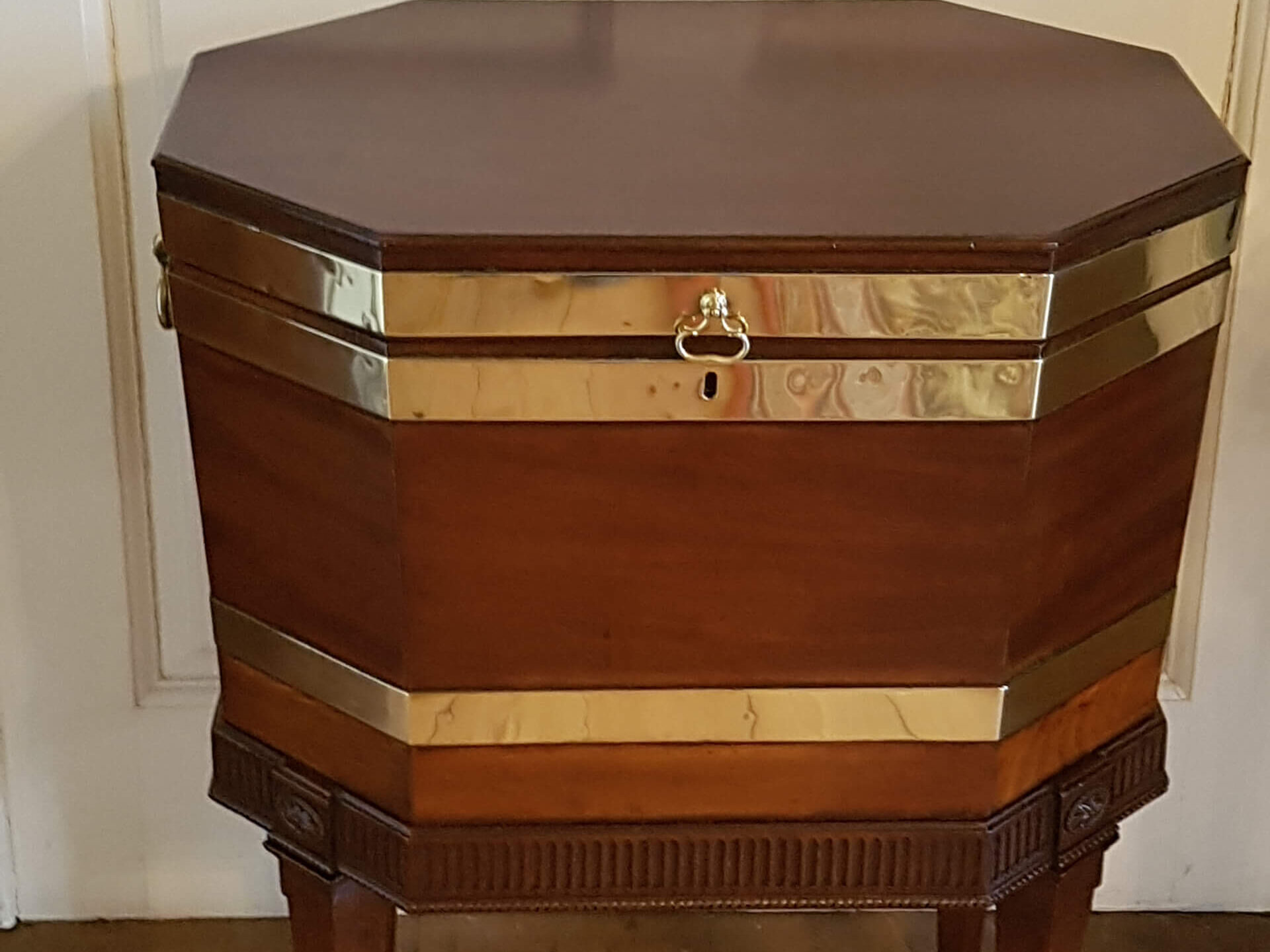Sideboard, Pedestals and Urns, and Cellaret
Description
This is one of only two sets of sideboard, pedestals and urns, with matching cellaret from Thomas Chippendale’s workshop in the world (the other set belongs to the Lascelles family of Harewood House, Yorkshire, who were also enslavers in the Caribbean).
The best quality mahogany was used in this furniture. It was cut down with great difficultly by enslaved African people trafficked to Jamaica and the wood was shipped to Britain.
This set was commissioned just after Ninian and Penelope bought Paxton House for £12,000 with the help of a £10,000 loan. The money to buy the furniture came from the profits derived from their trading activities and their Grenadian plantations worked by enslaved African people.
Pedestals and Urns
![]()
These were conserved in 2022 with grant funding from Museums Galleries Scotland.
Constructed of solid mahogany, each pedestal consists of a rectangular cupboard on plinth, originally lined with tin, to provide an insulated compartment for warmed plates. These pedestals each support a Grecian lebes-shaped vase with bronze finial. Both vases are lead-lined to contain water, with a pipe leading to a bronze tap on the pedestal frieze. The vases and their lids are very heavy. A lead weight is in the bottom of the pedestals to ensure stability
Sideboard
The top of this mahogany sideboard is constructed from a single plank of beautifully figured timber. It must have been an extraordinarily difficult task to cut down the huge tree from which this was made, to transport it to a ship, and load it – all done by enslaved people in Jamaica. It was also a highly skilled job in Chippendale’s workshop to cut it precisely by hand.
Note the stop fluting, carved goats head, guilloche scrolls, swags and ribbands made to match the decorative scheme in this room which was also completed by the Chippendale firm and the architect, Robert Adam.
Cellaret, c.1776
Mahogany and brass
H.31.5” W.24” D.18.5”
![]()
This was conserved in 2022 with grant funding from Museums Galleries Scotland.
The cellaret (wine cooler) has an octagonal shape with slightly tapered sides, a flat hinged top, with a corner moulding, brass bound, and brass handles.
Originally it was designed to sit underneath the sideboard, but the wine cooler was heightened at some period, probably to take taller bottles, such as those for hock, which became very fashionable after 1850. The band above the fluted base is of a different coloured mahogany. The spade feet have been slightly cut down, in comparison with those in the window seats, bergère chairs and dining chairs.

















